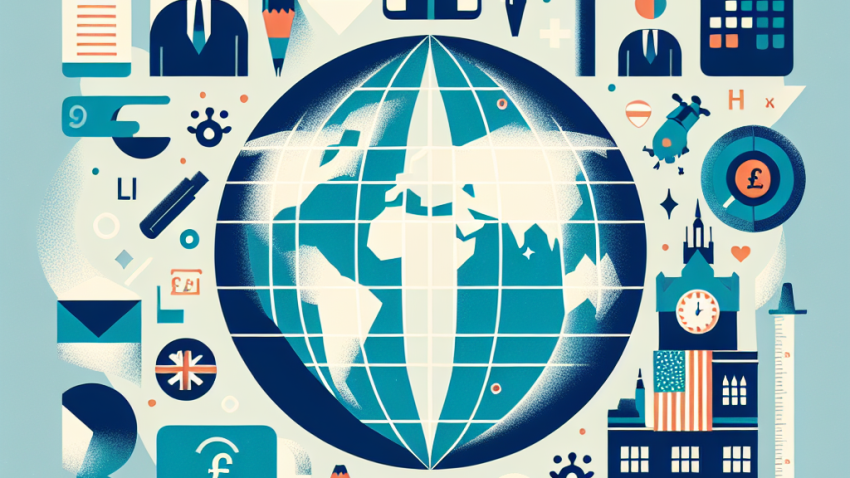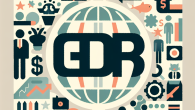
The Global Impact of Domestic Fiscal Rules: A UK Perspective
The Resilient Dollar: Can It Maintain Its Dominance in a Fragmenting Global Economy?
Ah, the U.S. dollar — often described with terms typically reserved for empires and emperors. “Dominant,” “hegemonic,” “indispensable.” But even empires must reckon with time and turmoil. As the world edges toward economic multipolarity, a meticulous question emerges: Can the dollar retain its supremacy in a fragmenting global economy? Put another way — will King Dollar continue to reign, or are we witnessing the early stages of a peaceful abdication?
Let’s unroll this parchment slowly, shall we?
The Dollar’s Reign: A Brief Retrospective
The U.S. dollar has long been the preferred instrument for global trade, investment, and reserve accumulation. This isn’t due to happenstance or divine intervention.
- Global trust in U.S. institutions — despite political squabbling, the rule of law persists where it counts: property rights, contract enforcement, central bank independence.
- Depth and liquidity of U.S. financial markets — trillions of dollars slosh through efficient markets operating with minimal friction.
- Military and geopolitical influence — Pax Americana comes with a credit facility, and it’s denominated in USD.
Following Bretton Woods and especially after Nixon pulled the plug on gold in 1971, the dollar evolved into the ultimate fiat deity. Reserve managers, central banks, oil barons, and manufacturers from Mumbai to Milan lined up to trade in the greenback. But the world in 2024 looks different — and fragility in dollar dominance is brewing in subtle and not-so-subtle ways.
Cracks in the Pillars: A Multipolar Money Matrix
We’re not yet in a post-dollar world, but we may very well be entering a post-absolute-dollar one. Several structural shifts suggest that the dollar’s position — while still robust — is less unassailable than it once seemed.
1. Weaponizing the Dollar: Sanctions and the Trust Deficit
In recent years, the U.S. Treasury has increasingly used the dollar as a geopolitical cudgel. Sanctions regimes against Iran, Russia, and others serve strategic purposes, but they also create cautionary tales.
When assets can be frozen at the push of a button, trust erodes. Monetary historian Barry Eichengreen famously wrote, “It’s good to be the issuer of the world’s principal reserve currency—until others decide it’s simply too risky.” Several regimes, politically or politically uncomfortable with the U.S., are seeking alternatives—for example, local currency pacts between China and Russia.
2. The Rise of CBDCs and Digital Rails
Central Bank Digital Currencies (CBDCs) are cropping up like weeds on a spring lawn. Over 100 countries are exploring or piloting national digital currencies as of 2024.
- China’s e-CNY has already processed billions in domestic transactions and is testing cross-border settlement pipelines with partners including the UAE and Thailand.
- The BIS (Bank for International Settlements) is actively piloting multi-CBDC platforms to reduce reliance on SWIFT and the dollar for cross-border payments.
To be clear, digital yuan ≠ global reserve currency. But narrow, bilateral arrangements using alternative rails threaten a key feature of dollar dominance: its involvement in virtually every major cross-border transaction.
3. Emerging Economies Diversifying Reserve Holdings
Reserve managers are increasingly diversifying into gold, the euro, renminbi, and even commodities. While the dollar still comprises nearly 60% of global central bank reserves, this is down from 71% at the turn of the millennium, according to the IMF’s COFER database.
Sure, the euro has its issues (bonjour, political fragmentation). The renminbi is not fully convertible. And gold pays no yield. But the trend is worth noting. Diversification always begins slowly — until a critical threshold is crossed, and then it becomes a cascading reallocation.
Can Any Currency Really Replace the Dollar?
Let us not rush to an untimely obituary. Replacing the dollar is not as simple as minting a rival coin. Any aspiring successor must meet several critical criteria:
- Large, liquid, trustworthy capital markets
- Reliable legal systems and property rights protections
- Convertibility and openness to capital flows
- Stable, predictable monetary policy
Currently, only the United States checks all of these boxes. The euro comes closest — but monetary union sans fiscal union invites chaos. China’s renminbi has vague capital controls and an opaque central bank. So while decentralization is happening, no single actor is ready to dethrone the dollar.
The Dollar’s Future: Stability by Default?
Perhaps the more accurate term for the dollar’s future role isn’t “dominant” or “secured,” but rather: entrenched by necessity. The alternatives are inadequate, incomplete, or ideologically incapacitated. For now.
However, fragmentation doesn’t require a complete dethroning. What we are likely to observe is a gradual regionalization of reserves and settlements. South-South trade may increasingly skip the dollar altogether. Petro-states may begin trading oil in yuan or rupees. But global finance and portfolio flows — the deep end of the pool — will continue to swim in dollar liquidity for the foreseeable future.
Implications for Global Markets
Volatility and Exchange Rate Decoupling
As transactions over diverging rails increase, exchange rates may respond less to U.S. monetary policy. This diminished pass-through can lead to greater volatility in peripheral currencies and require more dynamic hedging strategies from institutional investors.
U.S. Debt Vulnerability
The dollar’s role as the reserve currency allows the U.S. to finance budget deficits with relative impunity — issuing debt in its own currency and assuming perennial demand. A shrinking global appetite for Treasuries could eventually raise borrowing costs, especially if demand rotates toward gold or neutral currencies for reserves.
Conclusion: A Managed Decline or a Prolonged Plateau?
To borrow a phrase from Hemingway, “How did the dollar supremacy decline? Gradually, then suddenly.” Except — we’re just entering the gradually phase. For investors, policymakers, and curious minds with a flair for economic theatrics, the key is to monitor shifts quietly accumulating beneath the surface.
The dollar may not vanish from the global stage, but its script is certainly undergoing a rewrite.









Leave a Reply